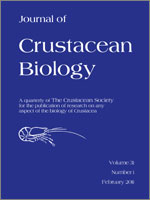Sand fiddler crab males, Uca pugilator (Brachyura: Ocypodidae), use their single enlarged claw as a weapon in fights for burrows and as a signal to attract females to burrows. Seventy-three males from a South Carolina marsh were in reared in the laboratory to determine if body size at the time of claw loss affects the morphology of the claw that subsequently regenerates. Thirty-six males were induced to autotomize claws and regenerated new ones. Thirty-seven males retained original claws. Across four molts, males regenerating claws gained more in claw length but less in body width and overall mass than males retaining original claws. The first molt accounted for these differences as males regenerating claws gained relatively little in body size but added much in claw length. Regenerated claws were more slender, having smaller dimensions of the manus relative to claw length. As the manus houses the claw closer muscle, regenerated claws are expected to be less powerful and appear more designed for signaling. Both regenerated and original claws became more slender with increasing length, suggesting that across a lifetime pressures arising from combat are reduced relative to those arising from mate attraction. Among regenerated claws, the height of the manus relative to claw length and the development of teeth and tubercles that facilitate pinching were greater when original claws were lost at smaller body sizes. Consequently, distinguishing original from regenerated claws can be difficult. An index, the score of tooth and tubercle development times the manus length divided by the product of carapace width and pollex length, discriminated claw types among reared crabs as well as sophisticated statistical techniques. Use of the index suggests that the frequency of regenerated claws increases with population density among neighboring natural populations. The relative size of regenerated claws was greater among males that had relatively large original claws prior to autotomy, suggesting that males may continue to signal their quality by regenerating a new claw that is relatively long.
How to translate text using browser tools
1 February 2011
Body and Claw Size At Autotomy Affect the Morphology of Regenerated Claws of the Sand Fiddler Crab, Uca pugilator
Denson Kelly McLain,
Ann E. Pratt
ACCESS THE FULL ARTICLE
It is not available for individual sale.
This article is only available to subscribers.
It is not available for individual sale.
It is not available for individual sale.

Journal of Crustacean Biology
Vol. 31 • No. 1
February 2011
Vol. 31 • No. 1
February 2011
brachychely
male mating success
regeneration
sexual selection
Uca pugilator




